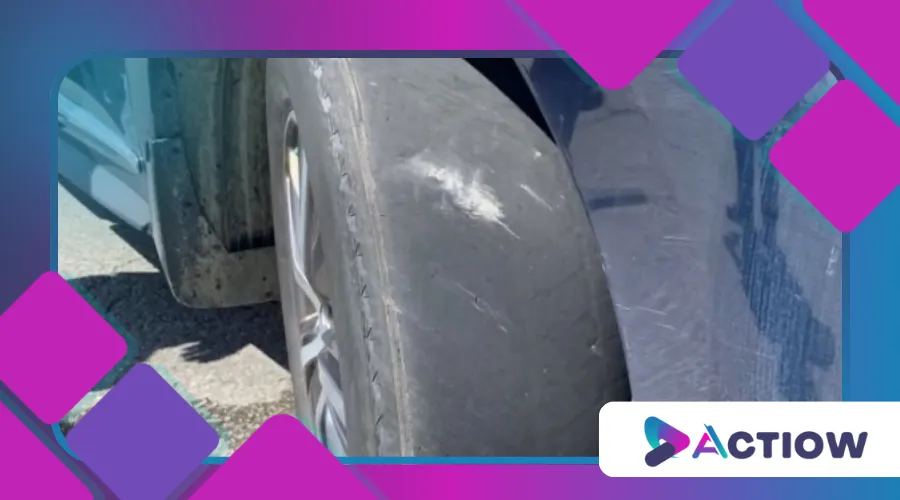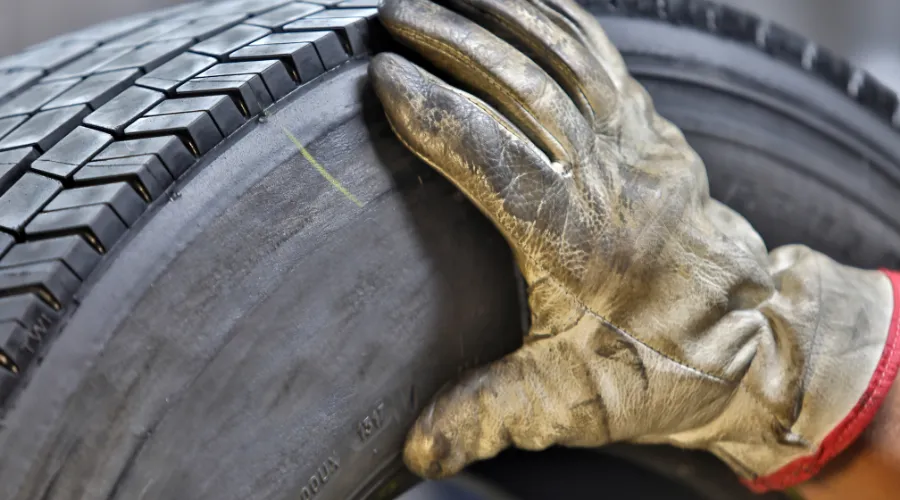Bald Tires: The Hidden Dangers and When to Replace Them

Anúncios
Bald tires are a silent hazard on the road, often overlooked until it’s too late.
Worn-out treads drastically reduce traction, increasing the risk of hydroplaning, blowouts, and extended braking distances.
Yet, many drivers push their luck, ignoring the warning signs.
Anúncios
Understanding when to replace them isn’t just about safety—it’s a legal and financial necessity.
The consequences of neglecting tire maintenance can be severe, both for your vehicle and your safety.
Investing in new tires is not just an expense; it’s a crucial step in ensuring your safety and that of others on the road.
Why Bald Tires Are a Gamble You Shouldn’t Take
Tire tread isn’t just cosmetic; it’s engineered to channel water, grip the road, and maintain control.
Once worn down, bald tires lose their ability to perform these critical functions.
According to the National Highway Traffic Safety Administration (NHTSA), nearly 11,000 crashes annually involve tire-related issues, many due to insufficient tread depth.
Inadequate tread depth can lead to a loss of control in wet conditions, increasing the likelihood of accidents.
Moreover, the financial implications of a crash caused by bald tires can far exceed the cost of a new set.
Being proactive about tire maintenance can save you from both physical harm and financial strain.
The Penny Test vs. The Quarter Test: Which One Wins?
Most drivers rely on the classic penny test—insert a penny into the tread with Lincoln’s head upside down.
If you see the top of his head, it’s time for new tires.
However, some experts argue the quarter test is more reliable, as it accounts for deeper tread wear.
The quarter test involves inserting a quarter into the tread with Washington’s head facing down.
If you can see the top of his head, your tires are likely too worn for safe driving.
Understanding these tests can empower drivers to make informed decisions about tire replacements.
+ How to Extend the Life of Your Car Battery
| Test Method | Minimum Tread Depth | Indicator for Replacement |
|---|---|---|
| Penny Test | 2/32 inch | Lincoln’s head fully visible |
| Quarter Test | 4/32 inch | Washington’s head visible |
While the penny test meets legal minimums, the quarter test provides an earlier warning, giving drivers a safety buffer.
This proactive approach can help you avoid hazardous driving conditions.

The Science Behind Tire Wear: What Accelerates Tread Loss?
Not all tires wear evenly.
Factors like improper inflation, misalignment, and aggressive driving speed up tread erosion.
Underinflated tires create excessive friction, while overinflation reduces the contact patch, causing uneven wear.
Additionally, driving habits such as rapid acceleration and hard braking can contribute significantly to tire wear.
Regular maintenance checks can help identify these issues before they lead to bald tires.
Understanding the science behind tire wear can help you adopt better driving practices.
- Rotation Neglect: Skipping rotations leads to faster wear on drive wheels.
- Road Conditions: Rough terrain and potholes chew through tread faster.
- Material Breakdown: UV exposure and heat degrade rubber over time.
Ignoring these factors turns even high-quality tires into bald tires prematurely.
By being attentive to these aspects, you can extend the life of your tires significantly.
++ How to Wash Your Car Properly Without Scratching the Paint
The Legal Consequences of Driving on Bald Tires
Most states enforce a minimum tread depth of 2/32 inch, and driving below this can result in fines.
Worse, if an accident occurs due to bald tires, insurers may deny claims, leaving you liable.
This not only poses a risk to your safety but also to your financial well-being.
Understanding the legal ramifications can motivate drivers to take tire maintenance seriously.
It’s crucial to stay informed about local regulations regarding tire safety to avoid unnecessary penalties.
Being proactive can save you from both legal troubles and accidents.
| State | Minimum Tread Depth | Fine for Violation |
|---|---|---|
| California | 1/32 inch | Up to $250 |
| Texas | 2/32 inch | Up to $500 |
| New York | 2/32 inch | Up to $300 |

When to Replace Tires: Signs Beyond Tread Depth
While tread wear is the most obvious indicator, other red flags demand attention:
- Cracks or Bulges: Sidewall damage can lead to sudden blowouts.
- Vibrations: Excessive shaking at high speeds suggests internal wear.
- Age: Even with good tread, tires older than six years harden and lose grip.
Waiting until tread is completely gone is a gamble with deadly stakes.
Regular inspections can help you catch these signs early and make timely replacements.
By being vigilant, you can ensure that your tires are always in optimal condition.
The Cost of Neglect: Bald Tires vs. Accident Risks
A new set of tires costs far less than an accident.
Hydroplaning, longer stopping distances, and loss of control in curves are just a few risks.
In wet conditions, bald tires can increase braking distance by up to 50%, turning a near-miss into a collision.
The financial burden of medical bills and vehicle repairs from an accident can be staggering.
Moreover, the emotional toll of an accident can linger long after the physical damages are repaired.
Prioritizing tire maintenance can prevent these dire consequences.
For more information on tire safety and maintenance, visit Tire Rack.
Smart Replacement Strategies: Balancing Safety and Budget
Replacing all four tires at once is ideal, but if budget constraints exist, prioritize the rear axle—losing rear traction is harder to control than front-wheel skids.
- All-Season vs. Performance Tires: Choose based on climate and driving habits.
- Warranty Considerations: Some manufacturers offer prorated tread life warranties.
- Rebates and Sales: Timing purchases around seasonal promotions can save hundreds.
By planning your tire purchases strategically, you can achieve both safety and savings.
Consider subscribing to tire retailer newsletters for updates on promotions and discounts.
This proactive approach can help you stay within budget while ensuring your safety on the road.
Final Verdict: Don’t Wait Until It’s Too Late
Bald tires aren’t just a maintenance issue—they’re a safety crisis waiting to happen.
Regular inspections, proactive replacements, and smart driving habits keep you in control.
The road demands respect, and your tires are the first line of defense.
Check them today—before they check out on you.
Taking action now can prevent future accidents and save you from costly repairs.
